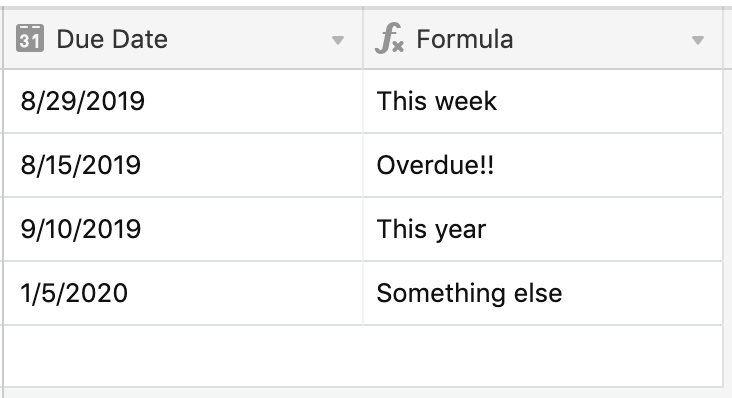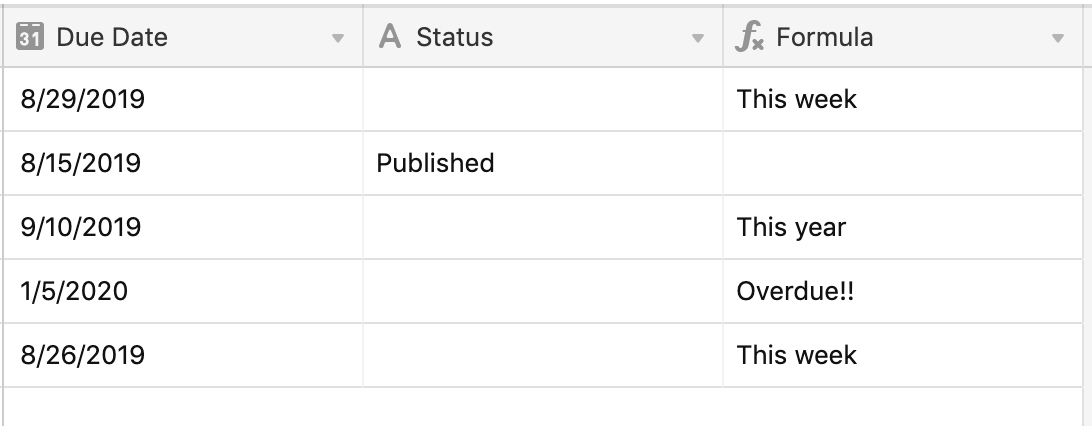Hi all,
I love the visual usability of Airtable, but am restricted by a total lack of understanding formulas (or Excel!). I’ve read all the Airtable guides, but can’t figure out my specific request and the formula needed, or whether it’s a formula I need or something else!
Apologies if stupid question, but:
I’ve made a table of content for social media and other media, listing content title, type, platform to post on, due date. Currently, it looks like this:
Name . Content Type. Status . Due Date .
Gifs for Facebook . Creative Idea 31/8/2019
(Imagine details filled out further, I can’t link to or insert a screenshot)
I am trying to work out a way to group these under three groups - either ‘This Week’, ‘This Month’ or ‘This Year’. I’d want the entries to be automatically populated into these groups dependent on the due date I manually enter. Is there a formula for this, where should I add it/format?
Thanks for patience!!




